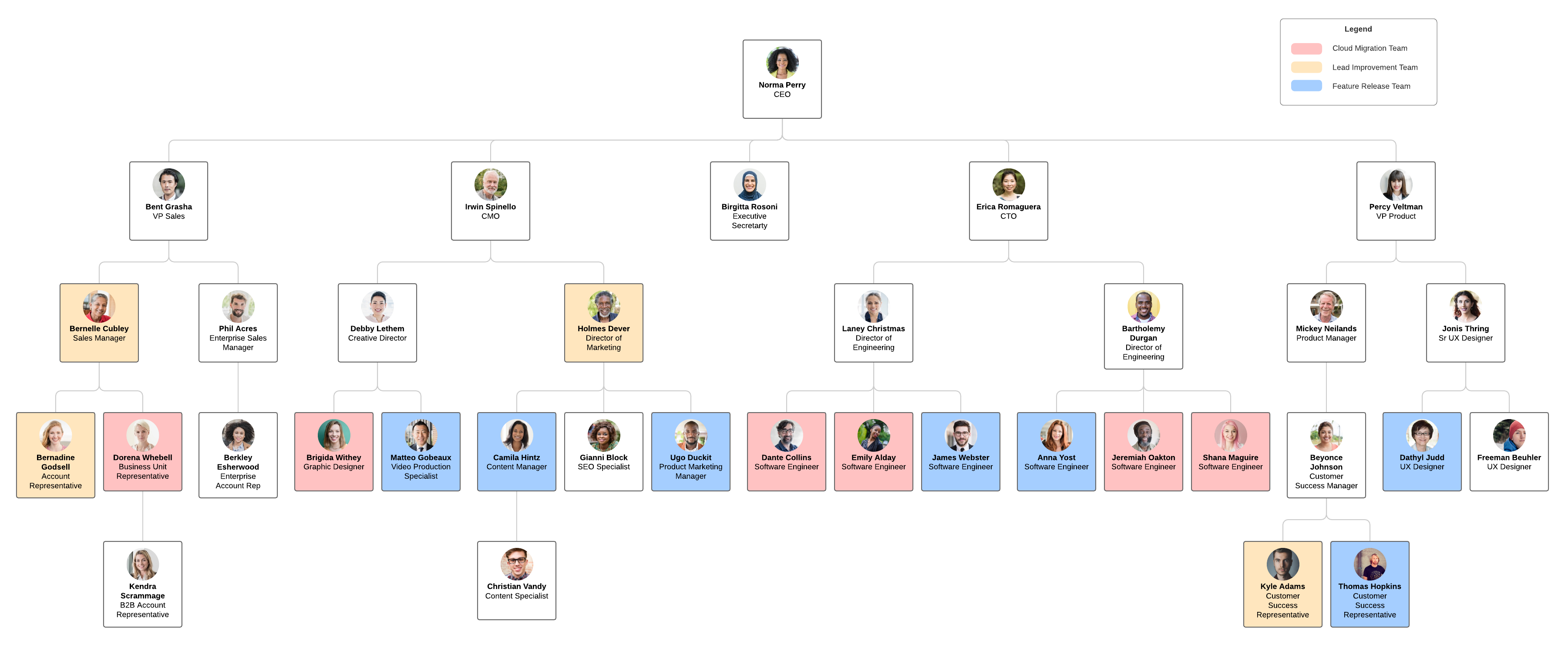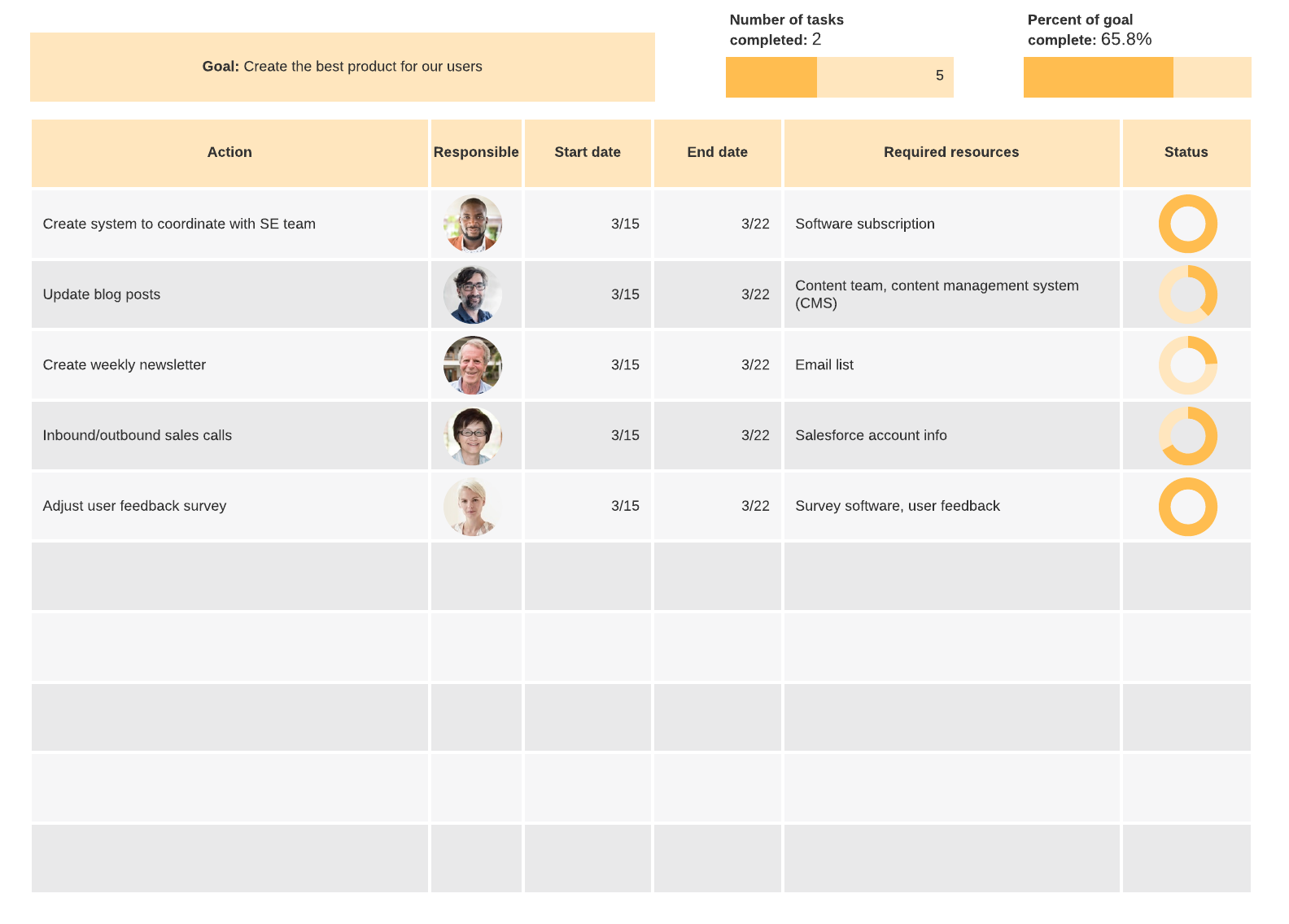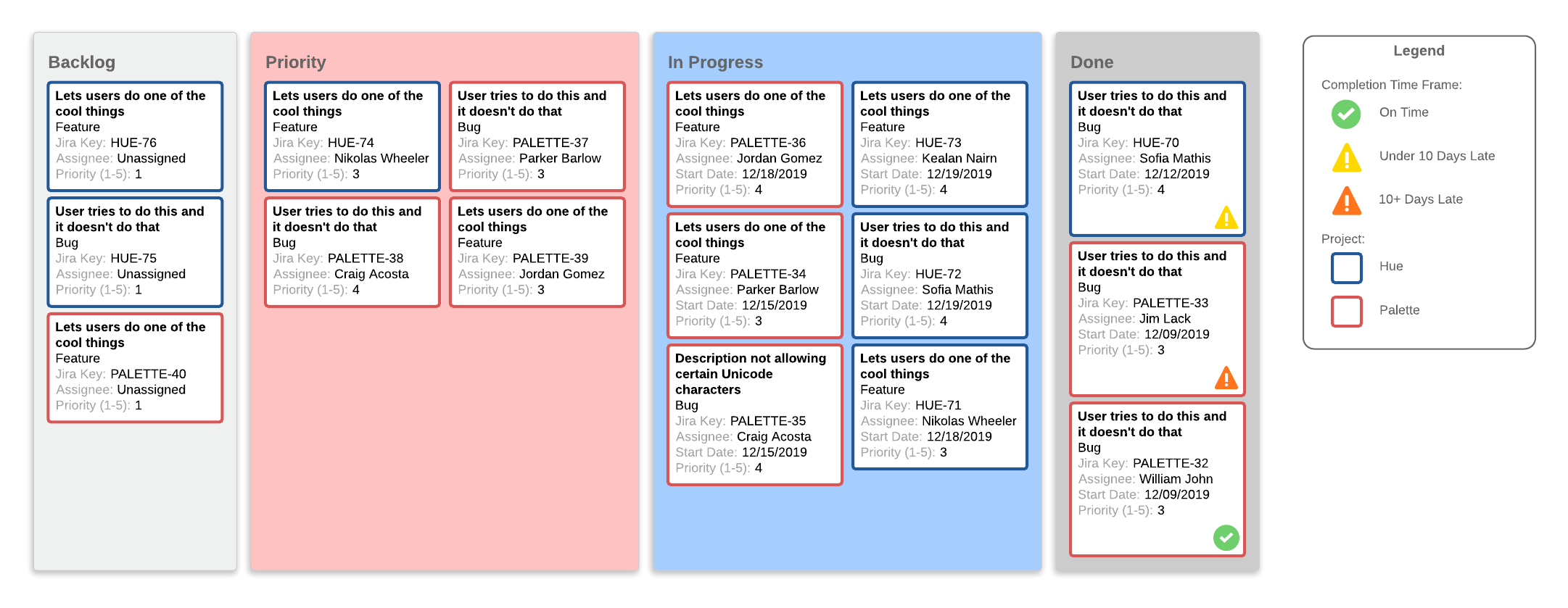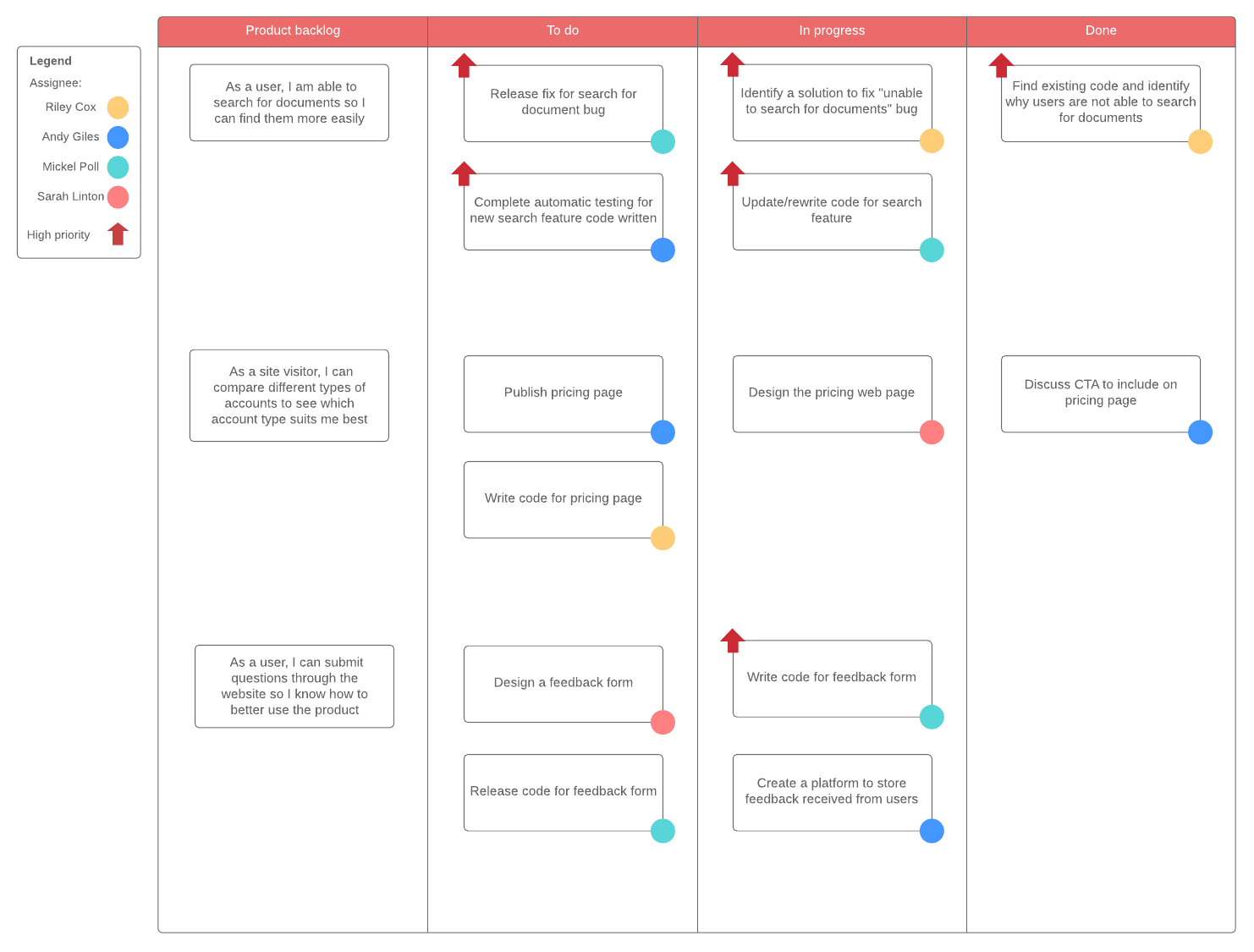Modern work rarely happens in isolation. More than ever, digital transformation and collaborative technologies have enabled a new era of collaborative work. Workplace silos are being torn down and more visible processes have emerged in their place. Departments are working together to create truly cohesive, integrated campaigns. These cross-functional teams are walking in lockstep, aligned by shared business goals.
Or at least that’s the vision. Creating and managing truly cross-functional teams is a tall order, but project managers who embrace the challenge will see improvements in company culture, productivity, and happiness. Read on to learn how to manage cross-functional teams and adopt effective strategies for cross-functional team management.
Why cross-functional teams are necessary
There’s a reason leading tech companies like Google, Facebook, Netflix, and Amazon embrace cross-team collaboration. Bringing together people with a diverse set of experiences, skills, and backgrounds can infuse your projects with creativity and enhanced problem-solving. This cross-functional collaboration can also speed up coordination and collaboration, minimize communication hiccups, and keep projects aligned around shared business goals and objectives.
Of course, it can also lead to conflict. These same cross-functional teams can introduce inefficiencies and biases as well as conflicting personalities, miscommunications, competing priorities, and more. Managing all of these moving parts and personalities is no walk in the park for a project manager. However, implementing effective management techniques can eliminate the roadblocks holding your teams back and set your business up for success.
8 strategies to effectively manage cross-functional teams
1. Build your best team
Cross-functional teams benefit from the unique mix of skills and talents each member brings to the table. As a project manager, it’s also important to make sure that you have the right players in place.
Creating detailed organizational charts can help you capitalize on team skills and find common ground among team members. This will ultimately make it easier for you to include the best people for the project.

2. Clearly define your goals
Seventy-nine percent of teams throughout an organization are siloed, Forrester reports. Because cross-functional teams are drawn from different departments within an organization, they often have different, and sometimes conflicting, agendas or legacy processes that could hinder performance. Without clear alignment on shared goals, team members may find it difficult to cooperate and collaborate.
Project managers can fend off this discord by defining clear project goals. Determine the outcome you’re trying to achieve and map that back to the actual deliverables needed to achieve that goal. Make sure the team is working collaboratively to develop goals that are clearly defined and measurable.
Allowing everyone on the team to contribute their thoughts will not only improve the quality of the goals you set but also help each team member feel ownership in the project.
It’s also important to establish clear roles. When your team members understand their role in the process, they’re more likely to work cross-functionally with other teams to get the work done, leading to smarter, more sustainable decision-making.
3. Use the right communication channels and tools
Managing cross-functional teams can feel a lot like herding cats, particularly when teams are used to working independently. But creating greater transparency and streamlined processes is essential for working cross-functionally. According to a survey by Forrester, 46% of respondents said poor business processes result in a higher risk of manual errors, mistakes, and poor decisions.
Collaborative communication requires a shift in mindset—your team members must be able to see how opening up channels between teams will not only improve results but also help them do their jobs better.
Project management and office communication tools can enable much of this collaboration as long as your teams know how to use each tool effectively.
Office communication tools like Slack and Google Chat and meeting technology tools like Zoom can help establish open lines of communication across disparate teams in your company. They can be particularly useful when team members are in different locations.
Project management tools like Asana, Workfront, or Trello can keep teams aligned on workflows and priorities. Cloud storage tools can make it less cumbersome to share and collaborate while also maintaining quality and version control.
A few best practices can help you maximize the effectiveness of these tools and resources:
- Create specific channels for project members to support quick, efficient, and transparent communication on fast-moving or complex projects.
- Use @mentions and chat to communicate with teammates in the correct documents.
- Leave comments in context to quickly find and resolve any issue in a timely fashion.
- Create a single source of truth where all your documents are indexed and connected.
Companies can see huge benefits from merely getting previously disconnected teams in the same room (even if that room happens to be virtual). Set up team-building exercises to encourage open lines of communication. Schedule regular meetings for teams to interact and share their progress and ideas.
Cross-team collaboration can help you identify communication inefficiencies across your organization. Shining a light on these areas and opening clear lines of communication will have a positive, long-term ripple effect across your business and your bottom line.
4. Build trust
Functional organizational structures often fall back on siloed methods of communication or terminology that might not be easily understood across an organization. This corporate jargon can create barriers to communication and make collaboration more challenging.
When building cross-functional teams, encourage team members to reframe their ideas in more simple, general terms that are understandable to anyone in the organization. By developing a cross-functional shared language, you can foster improved collaboration, trust, and creativity.
Here are a few easy ways to build a culture of trust and acceptance:
- Listen respectfully to all ideas.
- Get to know your team.
- Give your team permission to fail.
5. Encourage failure
Let’s take a closer look at that third idea. You may have seen the concept of failure touted by many motivational speakers, business consultants, and entrepreneurial coaches as a key step to success. However, for results-driven project managers, this step may feel counterintuitive.
But research has shown that permitting teams to fail results in more breakthroughs. Create a risk-free culture that encourages failure, iterative processes, and growth. These failures will help cross-functional teams uncover new ways of thinking about old problems.
6. Be ready for conflict resolution and difficult situations
Workplace conflict is common. According to new research from The Myers-Briggs Company, over a third (36%) of people now report dealing with conflict often, very often, or all the time, compared to 29% in the previous 2008 report.
Sometimes managing cross-functional teams means bringing together teams that are traditionally siloed. Think about sales and marketing. While sales and marketing alignment results in more effective marketing campaigns and improved sales, these teams often spend more time pointing fingers at each other than finding solutions.
Building cross-functional teams can often result in people jostling for power, influence, and limited resources. As a project manager, it’s important to be prepared for—and even embrace—this conflict. Differences in opinion are often nothing more than masked opportunities for growth and new ideas.
7. Develop a plan and timeline for the project
Even the best-laid plans can go awry without a clear picture of where you’re going. Visualize your project from start to finish with the right project management templates customized for the needs of your project and your project management methodology.
Action plan summary: A comprehensive action plan summary template will give cross-functional teams a holistic overview of project deliverables, timelines, owners, and objectives.

Kanban board: A Kanban board will allow your teams to visualize work priorities, deadlines, and approaching action points through a series of movable cards and work-specific columns. Kanban boards are the method of choice for many project managers who need to visualize their workflow.

Scrum board: If your project administration priority is task management, a Scrum board is a great tool to keep individual tasks organized between a To-Do list, an In-Progress list, and a Done or Completed list.

Gantt chart: For more extensive projects with overlapping and codependent timelines, a Gantt chart is an essential tool. Gantt charts allow project managers to view project steps in time relation to one another, allowing space to account for the duration of different stages of a project.

8. Continually reevaluate processes
One of the benefits of truly cross-functional teams is their agility, their ability to adapt to change quickly. Cross-functional teams often take an agile approach to help ensure new investments, tools, or even marketing campaigns work together in seamless, secure, and cost-effective ways.
Once effective cross-functional teams are in place, it’s important to continue to evaluate, measure, and refine the processes and tools you’ve put in place over time. What’s working? What’s not? Where did communication break down? What innovations are repeatable? This process will help you to continue to optimize your processes, build innovative products, and encourage effective collaboration across the company.
Building and managing effective cross-channel teams can be a challenging task for even the most experienced project managers. However, organizations that can bring unique capabilities together can infuse new perspectives and insights into their organization.

Learn why thinking visually boosts productivity for the whole team.
Go nowAbout Lucidchart
Lucidchart, a cloud-based intelligent diagramming application, is a core component of Lucid Software's Visual Collaboration Suite. This intuitive, cloud-based solution empowers teams to collaborate in real-time to build flowcharts, mockups, UML diagrams, customer journey maps, and more. Lucidchart propels teams forward to build the future faster. Lucid is proud to serve top businesses around the world, including customers such as Google, GE, and NBC Universal, and 99% of the Fortune 500. Lucid partners with industry leaders, including Google, Atlassian, and Microsoft. Since its founding, Lucid has received numerous awards for its products, business, and workplace culture. For more information, visit lucidchart.com.
Related articles
Why your company should incorporate tiger teams
When launching a new product, redesigning an organization, or implementing new processes, your company may require a tiger team of experts to see it through. Read how tiger teams add value to your organization.
How to communicate with senior management
Executive leadership and senior management are extremely busy making it difficult to pitch ideas. Here’s some tips on how to communicate with senior management to get your ideas the attention they deserve.
Task management tips for your team
In this blog post, we will explain what task management is, why it is important, and some tips you can implement this week to improve your task management.
3 leadership principles to foster team success
When it comes to defining yourself as a leader, it’s not a matter of whether you look the part or have a corner office. It starts with a conscious effort to nurture the leadership skills that instill an atmosphere of trust and cooperation. Learn more.

